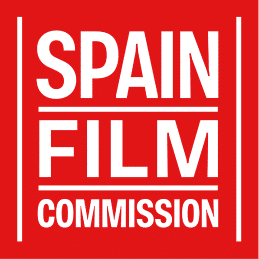Virtual scenarios
EL ESCORIAL
What the project consists of
In November 2024, Patrimonio Nacional y Spain Film Commissionwith the support of the Secretary of State for Telecommunications and Digital Infrastructuresagreed to scan the Royal Site of El Escorial by means of photogrammetry, and its subsequent processing into standardized assets for use in audiovisual productions.
The project, carried out between January and July 2024, is included in the Spain Virtual Locations line, within the framework of the action plans included in Royal Decree 937/2021 of October 26, 2021, published in the Official State Gazette of October 27, in compliance with the guidelines of the Spain Audiovisual Hub Plan for Europe.
The initiative’s specific objectives are as follows:
- Proporcionar a las productoras, tanto españolas como internacionales, unos activos (assets) from the digitalization of images of an outstanding and representative monument of Spanish architecture and urbanism, recognized as a symbol of our history and culture. These assets podrán ser utilizados de forma directa en diversos entornos de trabajo como escenarios virtuales en producciones de cine, series o videojuegos.
- To raise awareness of the potential of the Spanish audiovisual sector in the field of
virtual production.
- To position and defend audiovisual production as a major economic objective to create qualified
employment, attract investment, create companies, develop Spain’s tourism, image and positioning
and, in short, wealth for Spanish territories.
The Spain Film Commission received several bids for the production and selected El Ranchito, a Spanish company that is a leader in visual effects for audiovisual production. The company has won several Goyas and two Emmys and recently received the Medal of Merit in Fine Arts.
The project’s scope is as follows:
- Filming and adaptation of locations in the Monastery of El Escorial:
- The monastery’s main façade
- Courtyard of the Kings
- The monastery’s Royal Library
- Realización de escaneados a través de técnicas de fotogrametría y su posterior tratamiento en assets estandarizados, que permitan su uso de forma directa en diversos entornos de trabajo como escenarios virtuales en producciones de cine, series o videojuegos, asegurando que el resultado final de los mismos funcione de forma correcta en pantalla.
- Utilización de técnicas avanzadas, como la fotogrametría y LIDARto scan and recreate these elements in great detail. These techniques allow taking numerous photos or laser measurements of an object or place from different angles and then using that material to create a three-dimensional digital model. Once scanned, the most appropriate optimization processes are carried out for direct use by those companies that want to include them in their productions.
Patrimonio Nacional has authorized Spain Film Commission to film and has granted free use of the images, which are made available to production companies that require them at no cost. However, it reserves the right to authorize or not each use individually, depending on the purpose of the use of the images.
Objectives
Proporcionar a las productoras unos activos (assets) a partir de la digitalización de imágenes de un monumento destacado utilizables en entornos de trabajo como escenarios virtuales en producciones de cine, series o videojuegos.
Visibilizar el potencial del sector audiovisual español en la producción virtual.
Posicionar la producción audiovisual como objetivo de generación de empleo cualificado, atracción de inversiones, creación de empresas, desarrollo turístico, imagen y posicionamiento y, en definitiva, riqueza nacional.
Qué es Spain film commission
Spain Film Commission es una asociación sin ánimo de lucro que coordina la red de film commissions y film offices en toda España, liderando el posicionamiento del país en la industria de los rodajes y convirtiéndolo en un destino preferente para todo tipo de producciones.
Since its foundation in 2001, Spain Film Commission has worked tirelessly to position Spain as an ideal destination for audiovisual filming. Throughout these years, it has coordinated the efforts of the network, becoming a benchmark in the audiovisual industry both nationally and internationally.

What is the Monastery of El Escorial?
The Monastery of San Lorenzo de El Escorial, located on the southern slope of Mount Abantos in the Sierra de Guadarrama, is a monumental testimony to the reign of Philip II and the Spanish Golden Age. With a surface area of 33,327 m2, this imposing building stands out not only for its architectural and landscape value, but also for its profound historical and cultural significance. Since 1984, it has been a World Heritage Site, and its design uniquely combines Italian and Flemish artistic influences. The monastery served as a monastery itself, but also as a palace, pantheon, college and seminary, reflecting the many facets of power and religion in Spain at the time.
Solicite acceso a los assets
Monastery Façade
The facade of the Monastery of San Lorenzo de El Escorial, with its impressive granite structure and symmetrical design, is an ideal location for filming different productions. This iconic architectural element provides a backdrop of great visual impact, perfect for any production seeking to highlight the majesty and historical heritage of Spain. Its detail and grandeur are captured to perfection, ready to be used in any virtual environment.

Monastery Library

The Library of the Monastery of San Lorenzo de El Escorial is a space of great cultural and aesthetic richness. With its painted vault and atmosphere of erudition, it offers a virtual environment that adds depth and authenticity to any production. This space allows the unique atmosphere of the library to be recreated, providing a historical and artistic setting that can be easily incorporated into a variety of audiovisual projects.
Courtyard of the Kings
The courtyard of the Kings of the Monastery of San Lorenzo de Escorial stands out for its grandeur and historical richness. With its imposing statues of biblical kings and monumental architecture, this space offers an impressive virtual environment that can be easily integrated into any audiovisual production. Its design provides a unique atmosphere that makes any scene with a touch of majesty and solemnity.

